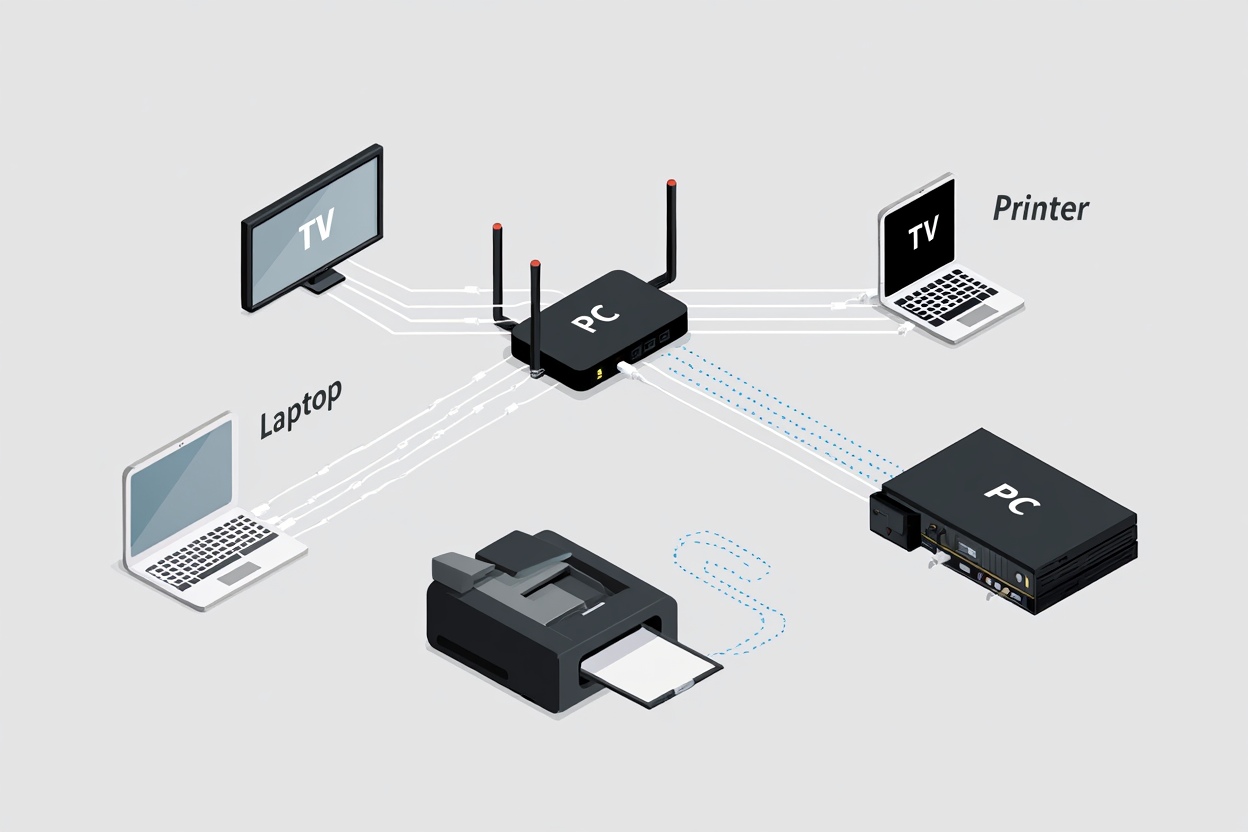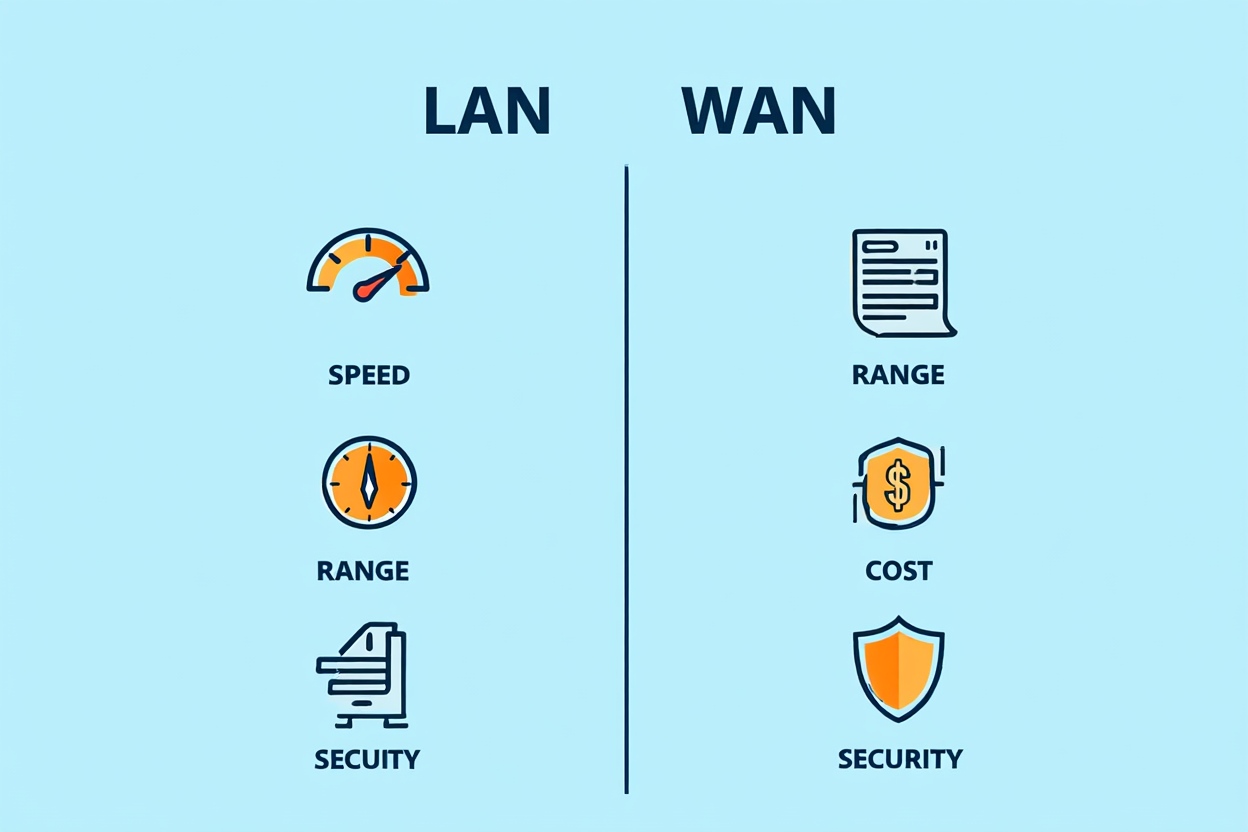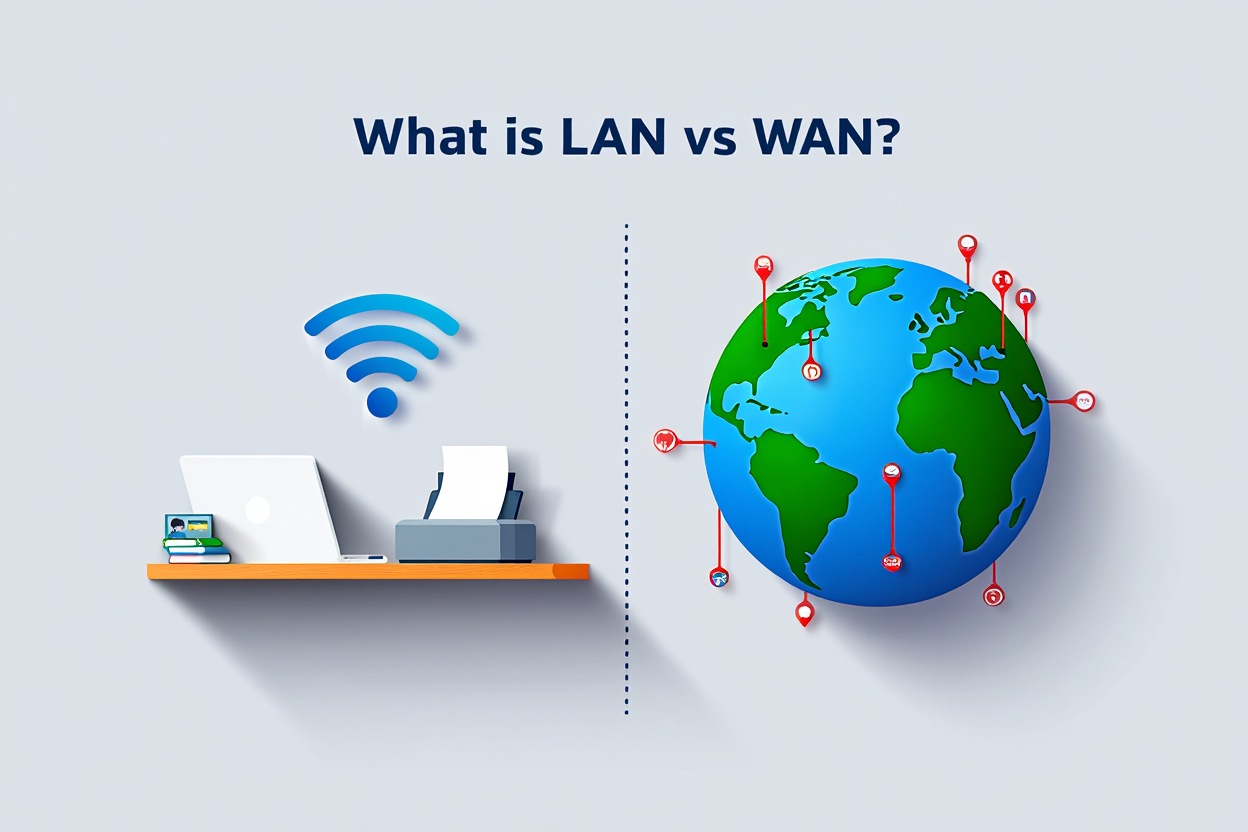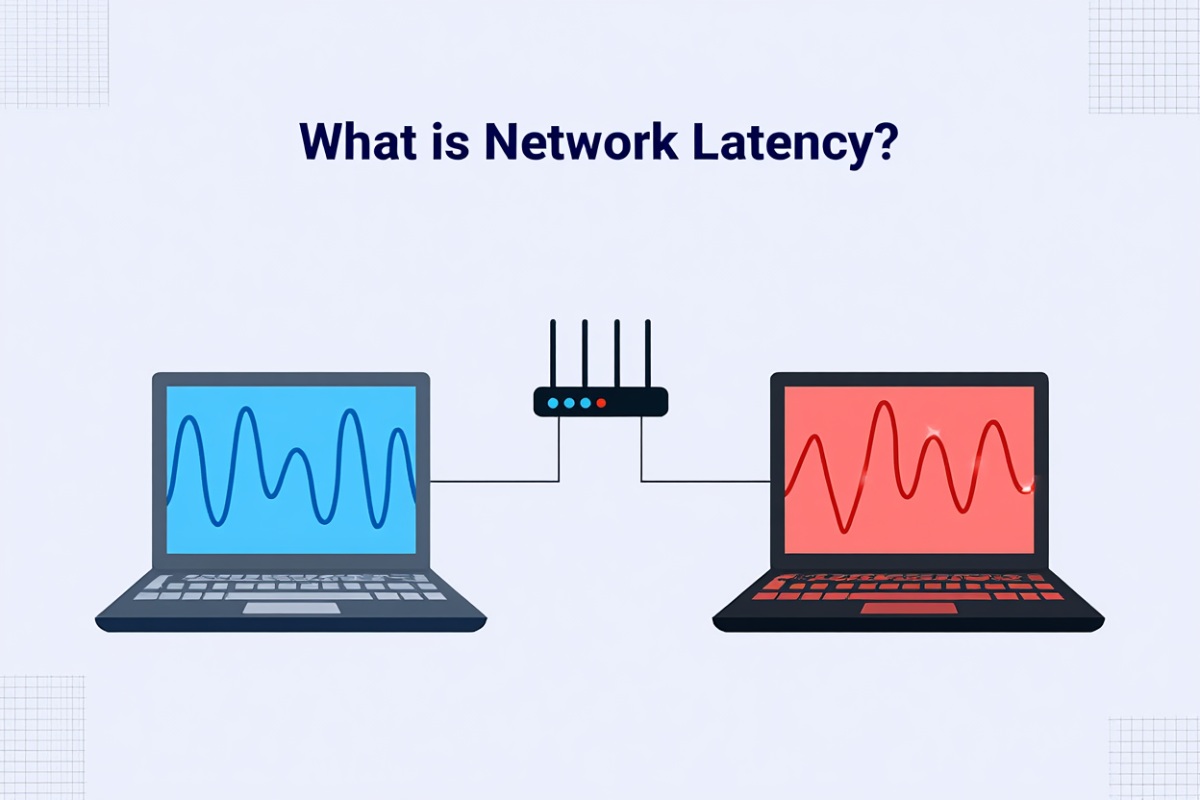In our digital world, understanding how data flows between devices can make a real difference—whether you’re setting up a home network, managing an office, or simply trying to improve your Wi-Fi speed.
That’s where the concepts of LAN and WAN come in.
If you’ve ever wondered what is LAN vs WAN, you’re not alone. These two networking terms often confuse people, but they’re fundamental to how computers, smartphones, printers, and even smart TVs communicate.
In this article, we’ll break down the definitions, differences, and real-life applications of LAN and WAN, using practical examples and relatable experiences to help you understand not just what they are—but when and why they matter.
Let’s start by exploring what each network type does and how they impact your digital life.
1. What is a LAN?
A LAN (Local Area Network) connects devices within a limited area—like a home, office, or school. LANs allow users to share files, printers, and internet access over short distances using Ethernet cables or Wi-Fi.
Key Features of LAN:
-
Limited range – Usually one building or room
-
High speed – Minimal latency and fast data transfer
-
Low cost – Easy and affordable to set up
-
Tight security – Controlled access within a closed network

2. What is a WAN?
A WAN (Wide Area Network) connects multiple LANs across long distances. It enables communication between different locations, such as offices in different cities or countries. The best-known example of a WAN is the internet.
Key Features of WAN:
-
Global coverage – Connects networks across cities, nations, or continents
-
Lower speed (compared to LAN) due to distance and routing
-
Higher cost – Requires leased lines, advanced hardware
-
Complex management – Involves multiple service providers

3. LAN vs WAN: Side-by-Side Comparison
So now that you understand what LAN and WAN are individually, it’s time to put them head-to-head.
Many users, especially those setting up home or office networks, find themselves wondering which option suits their needs better—or whether they need both. To help you decide, here’s a side-by-side comparison that breaks down their core differences across speed, cost, coverage, and more.
Whether you’re a casual user or managing IT for a business, this table will give you a clear picture of how LAN and WAN stack up against each other.
| Feature | LAN | WAN |
|---|---|---|
| Full Form | Local Area Network | Wide Area Network |
| Coverage | Small (one building or campus) | Large (global or inter-city) |
| Speed | Very fast (up to 10 Gbps) | Slower (depends on provider/region) |
| Setup Cost | Low | High |
| Maintenance | Easy | Complex |
| Security | High (locally managed) | Moderate (multiple external points) |
| Example | Home Wi-Fi, office LAN | Internet, corporate WAN |

4. When Should You Use LAN or WAN?
Now that you know the definitions and differences, the next big question is: Which one should you use—and when?
The answer depends on your goals, environment, and how far your network needs to reach. Let’s break it down into specific use cases so you can clearly see where each type of network makes the most sense.
4.1. When to Use a LAN (Local Area Network)
Choose a LAN if your networking needs are local, fast, and self-contained.
Ideal Scenarios:
-
Home or Office Setups: You’re connecting multiple devices like laptops, printers, and smart TVs within a single space.
-
Gaming and Media Sharing: Fast, low-latency connection is needed for multiplayer gaming or streaming content from a local media server.
-
Offline File Sharing: You regularly transfer large files between computers without needing the internet.
-
Small Business Collaboration: Colleagues share access to a file server, printer, or backup system.
Why Choose LAN?
-
It offers the highest speeds, especially when wired (Ethernet).
-
Security is easier to control because everything stays inside your building.
-
Costs are lower—you only need a switch/router and Ethernet cables or a Wi-Fi access point.
4.2. When to Use a WAN (Wide Area Network)
Choose a WAN when you need to connect devices or networks over large distances, or when your operations depend on remote access.
Ideal Scenarios
-
Multi-Location Businesses: Your company has multiple offices or branches that need to access a shared system or central server.
-
Remote Work: Employees need to log into corporate systems from home or while traveling.
-
Cloud Services and Online Platforms: You use SaaS tools like Google Workspace, Microsoft 365, Dropbox, or Zoom regularly.
-
Global Collaboration: Teams in different countries need to access the same network or database.
Why Choose WAN?
-
It enables remote access from anywhere, even across borders.
-
Essential for enterprise networks, cloud computing, and data synchronization.
-
Often requires working with ISPs, VPNs, or leased lines, especially for secure and reliable communication.
4.3. LAN and WAN: Not Mutually Exclusive
In many setups, LAN and WAN work together. For example:
-
Your home network (LAN) connects your devices locally.
-
Your home router connects that LAN to the internet (WAN).
Understanding the balance between the two can help you optimize your setup for speed, security, and scalability.
5. Real User Experience: LAN vs WAN in Action
LAN Story:
“At my small business, we built a LAN for six employees. Sharing files, printing, and backing up data happens instantly. It’s secure, simple, and cost-effective.”
– Elena, Graphic Designer
WAN Story:
“I manage logistics across three warehouses. With our WAN, we monitor stock levels in real-time, no matter where we are. It keeps operations tight and saves us from delays.”
– Jeff, Supply Chain Manager
Read more: What Is a VPN? A Complete Beginner’s Guide to Online Security
6. Technologies Used in LAN vs WAN
Understanding how LAN and WAN work is only part of the story. To really grasp their capabilities, you need to know which technologies power them.
From hardware like routers and switches to protocols and communication methods, both LANs and WANs rely on different tools and systems. The technologies behind each network type affect everything from speed to scalability and security.
Let’s explore the common technologies that make LAN and WAN networks possible.
6.1. LAN Technologies
LANs are often found in homes, schools, and offices—so they use hardware and standards that prioritize speed, simplicity, and low cost.
Ethernet (IEEE 802.3)
-
What it is: A wired networking standard for connecting computers within a LAN.
-
Speed: Ranges from 100 Mbps (Fast Ethernet) to 10 Gbps (Gigabit & 10G Ethernet).
-
Use Case: Ideal for stable, high-speed connections like desktop PCs, printers, or servers.
Wi-Fi (IEEE 802.11)
-
What it is: Wireless LAN technology that enables devices to connect without cables.
-
Speed: Wi-Fi 5 (~800 Mbps) to Wi-Fi 6 (~2.4 Gbps); Wi-Fi 7 emerging.
-
Use Case: Perfect for mobile devices, laptops, and environments where wiring is impractical.
Switches
-
What it is: A central device that connects multiple devices in a LAN and manages traffic between them.
-
Function: Ensures data is only sent to the intended recipient device.
Access Points
-
What it is: Devices that extend Wi-Fi coverage and allow wireless devices to join the LAN.
-
Use Case: Used in larger homes, offices, or areas with poor signal.
6.2. WAN Technologies
WANs connect networks across long distances, so they require robust, scalable, and often enterprise-level technology.
Leased Lines (e.g., T1, E1, MPLS)
-
What it is: Private, dedicated communication lines rented from telecom providers.
-
Speed & Reliability: High-speed, guaranteed bandwidth; expensive but stable.
-
Use Case: Corporations connecting headquarters and branches securely.
VPN (Virtual Private Network)
-
What it is: Encrypted connection over a public network (like the internet) that emulates a secure WAN link.
-
Use Case: Popular for remote workers and inter-office secure communication.
Fiber Optic Backbone
-
What it is: High-capacity cables that form the core of the internet and large WANs.
-
Speed: Up to multiple terabits per second.
-
Use Case: Used by ISPs and large-scale data centers.
Satellite, 4G/5G, and Wireless WAN
-
What they are: Wireless technologies used when wired options are unavailable.
-
Use Case: Remote areas, mobile offices, backup internet connections.
Summary Table: LAN vs WAN Technologies
| Technology | LAN Use | WAN Use |
|---|---|---|
| Ethernet | Fast, stable device-to-device | Rare |
| Wi-Fi | Wireless home/office connections | Only in edge environments |
| Switch | Local traffic routing | Not used across long distances |
| Router | LAN ↔ WAN gateway | Directs traffic to broader networks |
| VPN | Connect remote users to LAN | Secure data over public WANs |
| Leased Lines | Not applicable | Dedicated, high-reliability WAN links |
| Fiber Backbone | Sometimes in enterprise LANs | Backbone for ISP and cloud services |
| Satellite / 5G | Rare backup | Essential in remote WAN environments |
7. LAN vs WAN Security: Which is Safer?
Security is a major concern when building or managing any network. Whether it’s your personal data, company files, or customer information, keeping your network protected is non-negotiable.
But between LAN and WAN, which is more secure? The answer depends on how the network is designed, who manages it, and where the risks come from. Let’s take a closer look.
7.1. LAN Security: Controlled but Still Vulnerable
LANs are typically closed systems—confined to a home, office, or local area—making them easier to secure.
Strengths:
-
Physical control: Access is limited to people inside the building.
-
Single administrator: One person (or IT team) controls user access and configurations.
-
Simple firewall setups: Basic network protections are often enough.
Weaknesses:
-
Insider threats: A compromised device inside the network can harm others.
-
Outdated software: Devices on LANs often skip updates, creating vulnerabilities.
-
IoT devices: Smart home gadgets can be weak points if not properly isolated.
7.2. WAN Security: Broader Exposure, More Tools
WANs, especially internet-facing ones, are inherently more vulnerable due to their global nature. They require multiple layers of protection to be considered secure.
Strengths:
-
Encryption protocols: VPNs, SSL/TLS, and IPsec secure WAN data transfers.
-
Distributed security tools: Firewalls, intrusion detection systems (IDS), and endpoint protection can be deployed across locations.
-
Cloud-based controls: Centralized security monitoring and response.
Weaknesses:
-
Public exposure: Data often travels through public infrastructure.
-
Multiple endpoints: More locations mean more potential points of failure.
-
ISP reliability: You’re partly at the mercy of your service provider’s security.
7.3. Best Practices for Both
Regardless of whether you’re using a LAN or a WAN, here are some universal tips to stay secure:
For LANs:
-
Use strong Wi-Fi passwords and change them regularly.
-
Segment your network (e.g., guest Wi-Fi separate from main LAN).
-
Keep all devices updated and patched.
-
Install antivirus software on every machine.
For WANs:
-
Use VPNs for remote access.
-
Deploy firewalls at every entry point.
-
Enable multi-factor authentication (MFA) for remote services.
-
Monitor activity with logging and alerting systems.
Verdict: Which Is Safer?
-
LANs are easier to secure due to limited access and scope—but can still be risky if neglected.
-
WANs are more exposed, requiring advanced protections—but with the right tools, they can be just as safe.
8. Future of LANs and WANs
As technology evolves, so do the ways we build and use networks. The traditional boundaries between LAN and WAN are becoming less defined, thanks to cloud computing, remote work, and mobile-first infrastructure.
But instead of one replacing the other, the future lies in how LANs and WANs integrate and adapt to new digital demands.
Let’s look at the trends shaping the next generation of networking.
8.1. LAN: Getting Smarter, Faster, and More Wireless
LANs are no longer just about plugging in Ethernet cables. The rise of smart homes, IoT devices, and Wi-Fi 6/6E is transforming what a “local” network can do.
Key Trends:
-
Wi-Fi 6 & 6E: Offering faster speeds, lower latency, and better performance in crowded environments.
-
Smart device integration: Homes and offices have dozens of devices sharing the same LAN—from voice assistants to thermostats.
-
LAN automation tools: Businesses are using AI-powered network management to optimize traffic in real time.
8.2. WAN: Shifting to Software-Defined and Cloud-Based Models
With the explosion of remote work and global cloud platforms, WANs are undergoing one of their biggest shifts ever—moving from hardware-centric setups to software-defined solutions.
Key Trends:
-
SD-WAN (Software-Defined WAN): Allows centralized control over multiple connections, improves bandwidth usage, and reduces costs.
-
Cloud-native networking: WANs now support seamless connections to platforms like AWS, Azure, and Google Cloud.
-
Edge computing: Brings data processing closer to the user, reducing WAN latency for critical applications.
8.3. Convergence: The Rise of Hybrid and Unified Networks
As businesses scale and users become more mobile, many networks are evolving into hybrid LAN-WAN environments—blending the best of both worlds.
-
Example: A company has a high-speed LAN in its HQ, but uses SD-WAN to connect remote branches and employees securely via VPN or cloud services.
-
Unified management: Admins now use centralized dashboards to monitor and control both LAN and WAN components in one place.
8.4. Security-Driven Networking
The future of both LANs and WANs is security-first. Networks must be resilient against increasingly sophisticated threats, especially in hybrid and mobile-first architectures.
Trends include:
-
Zero Trust Network Access (ZTNA)
-
AI-driven threat detection
-
Automated patching and policy enforcement
-
SASE (Secure Access Service Edge) that combines SD-WAN with security as a service
LANs and WANs aren’t going away—they’re evolving to meet the demands of a more connected, cloud-powered world. Whether you’re managing a home network or an international company, staying ahead of these trends means faster, safer, and smarter connectivity.
9. Conclusion
Understanding what is LAN vs WAN empowers you to make better networking decisions—whether at home, work, or on the go. LANs offer speed and simplicity in small spaces. WANs offer global reach and remote flexibility.
At Softbuzz, we break down tech in ways that make sense. Explore our Networking section to stay sharp and secure in the digital world.
Need help setting up a network? Drop your question in the comments—we’re here to help!










